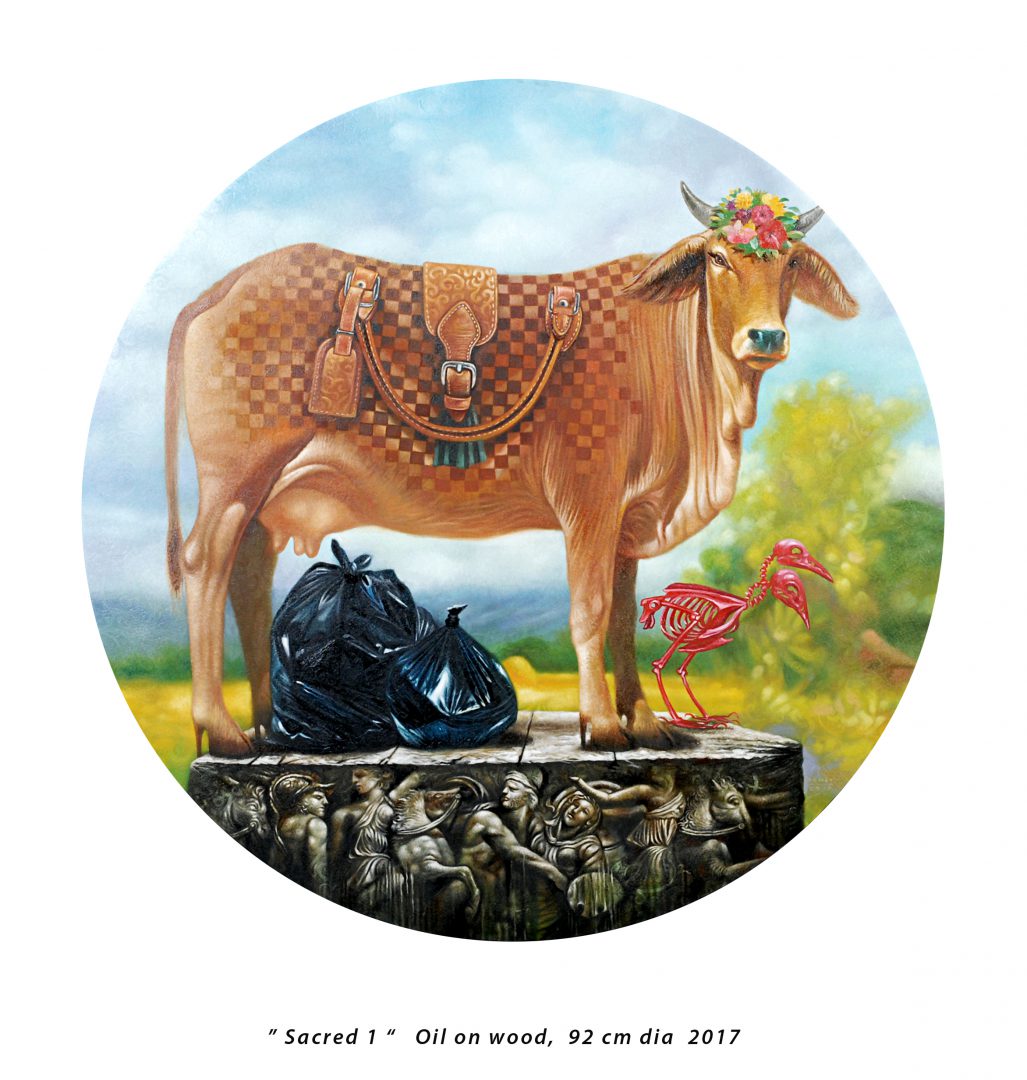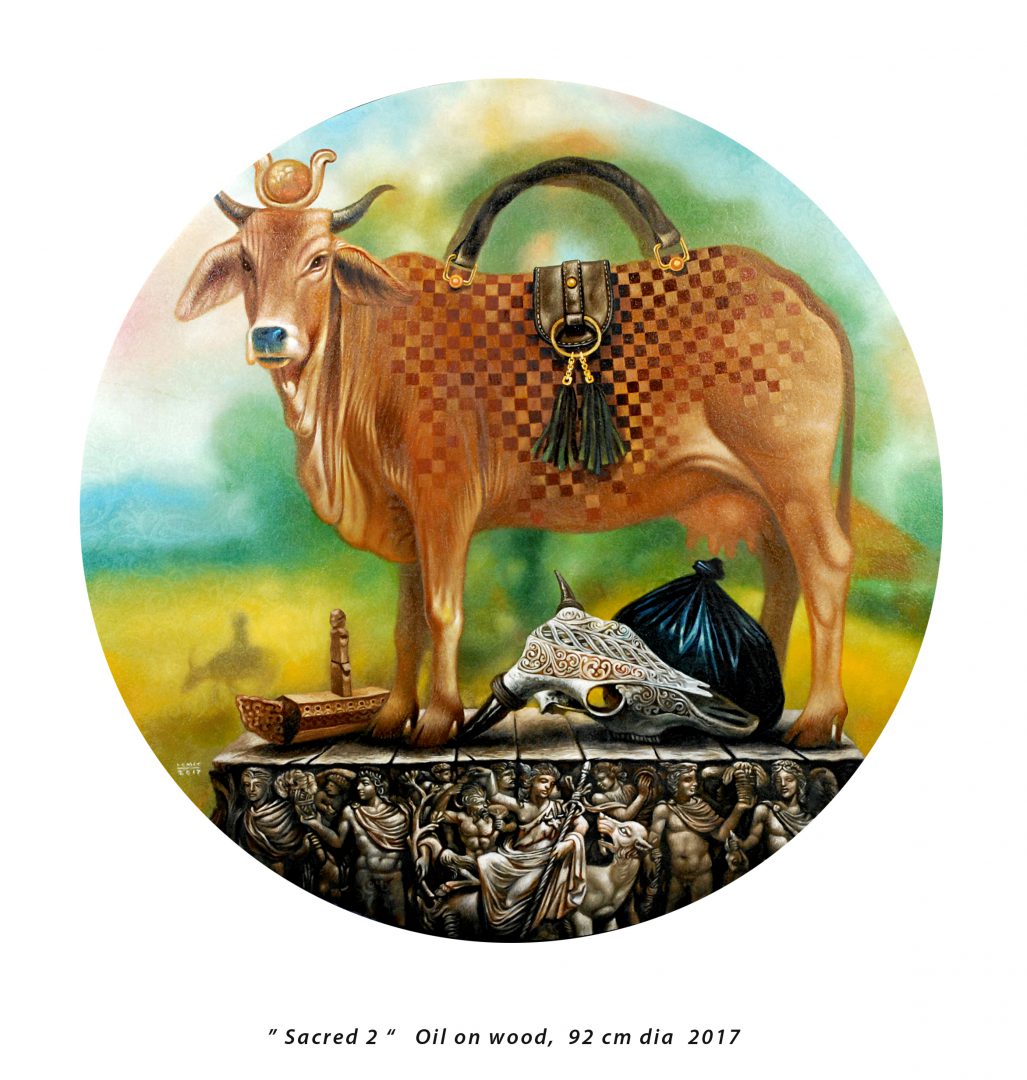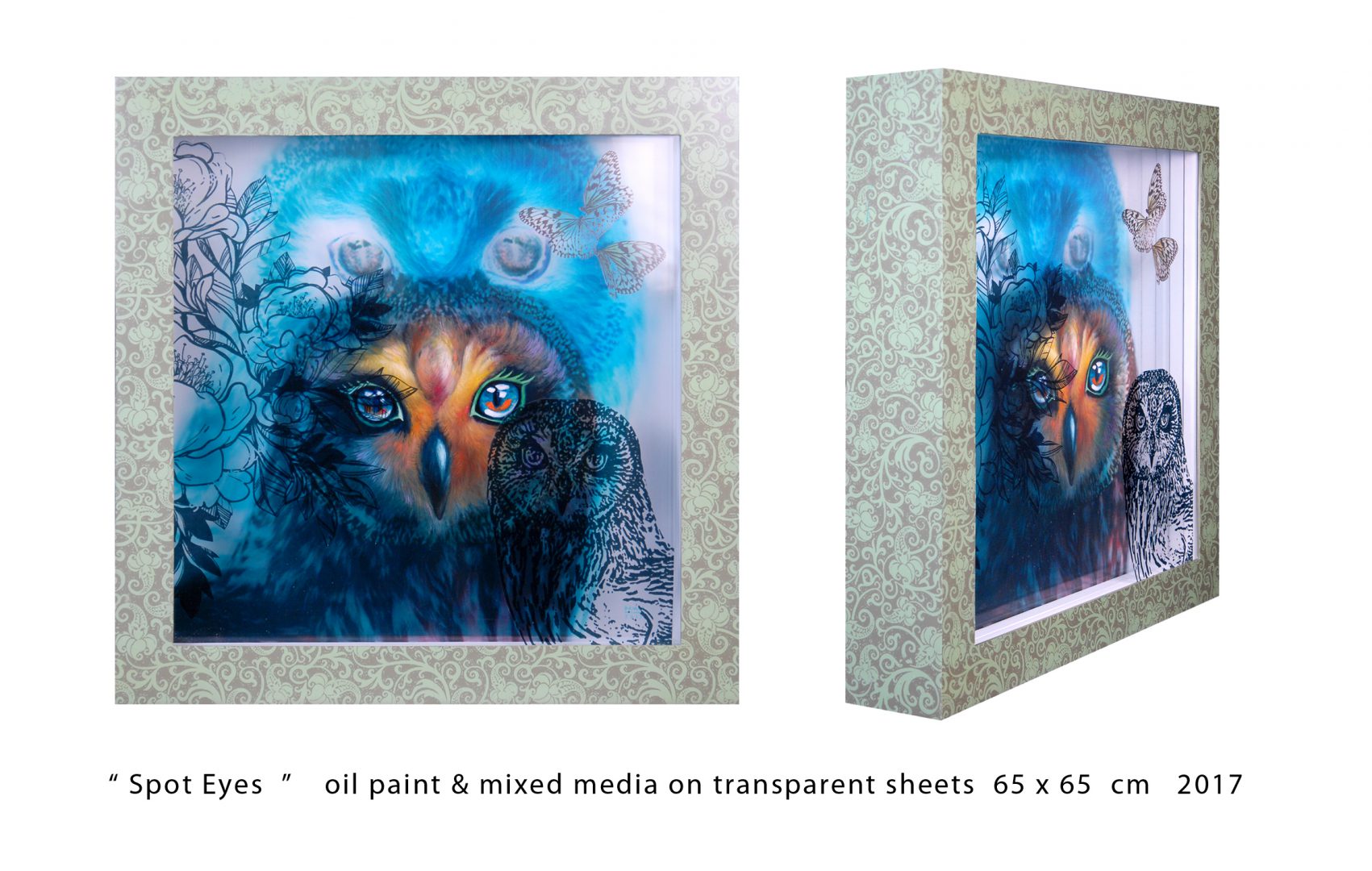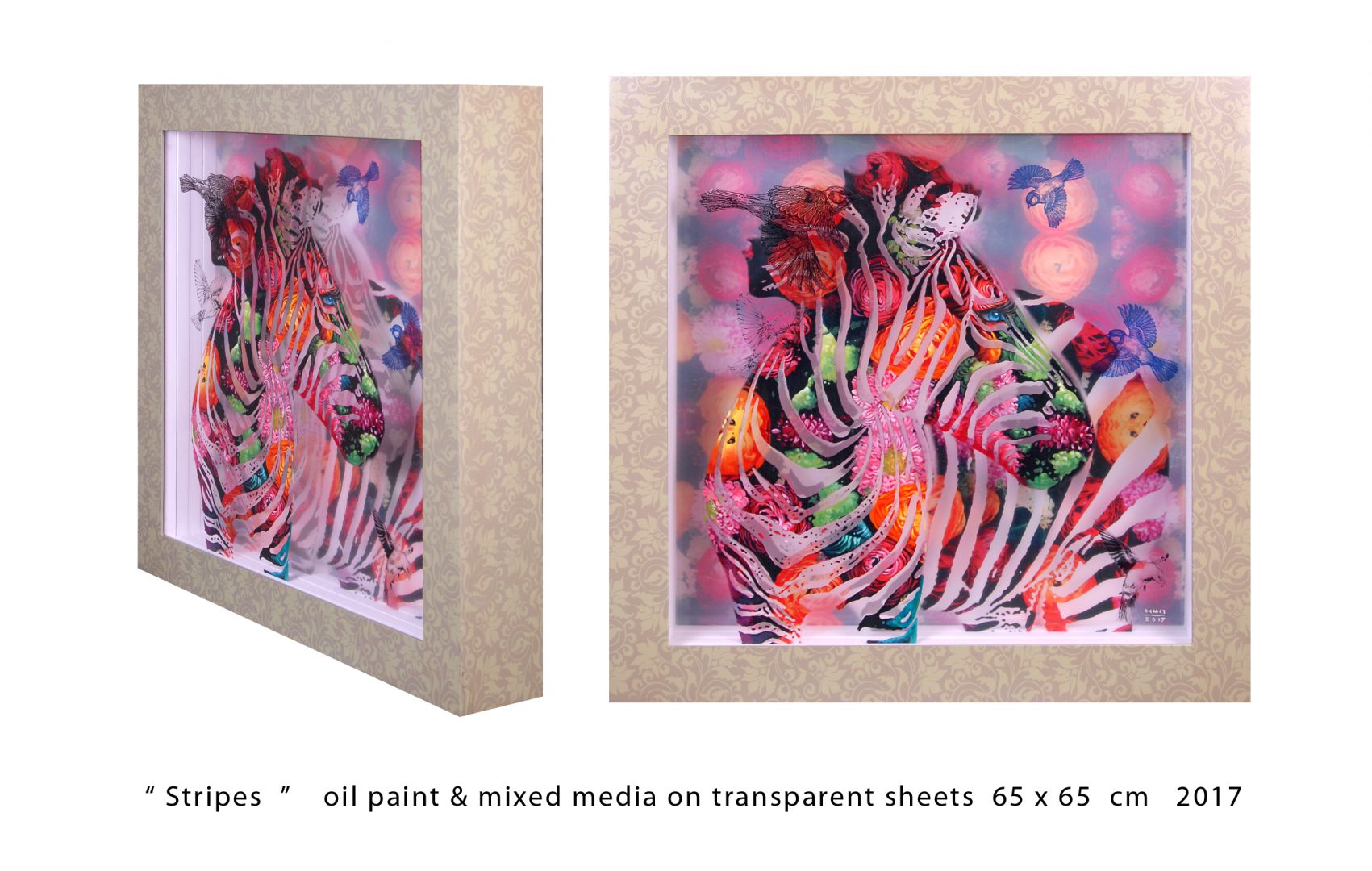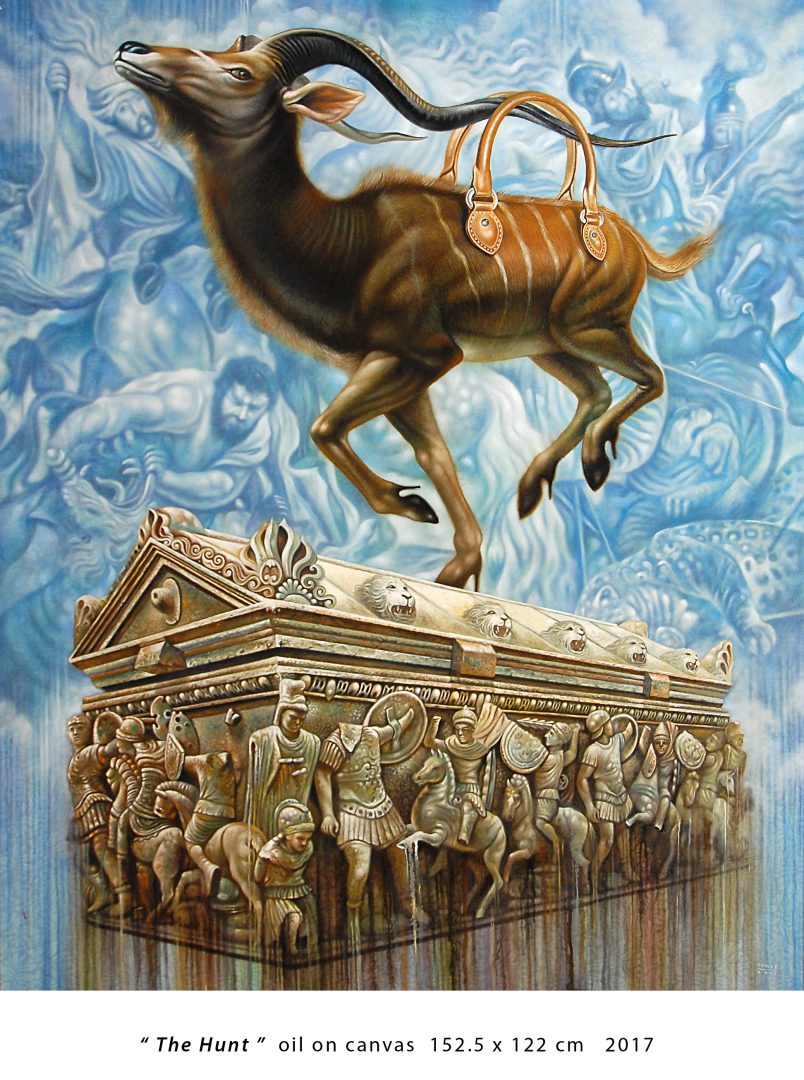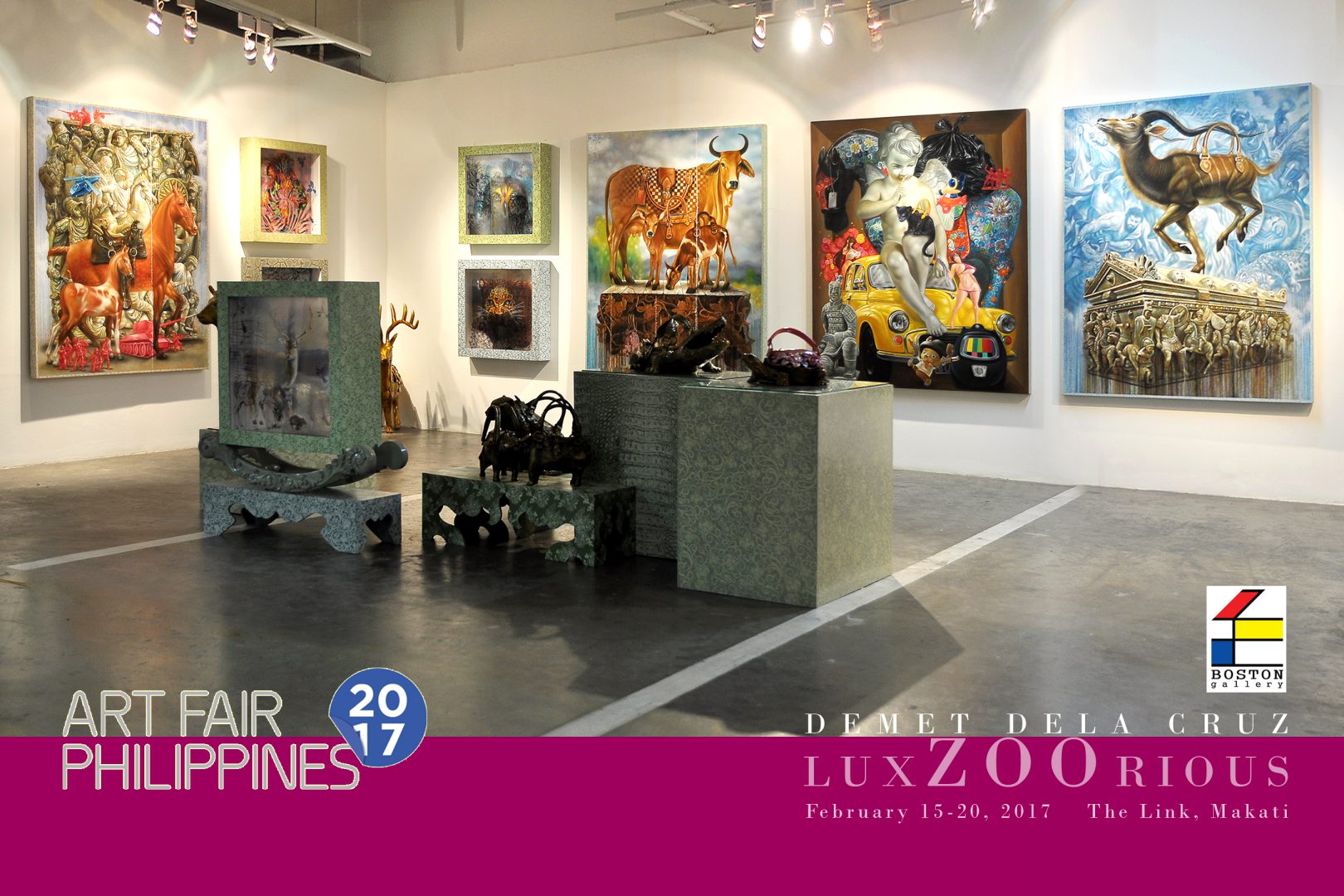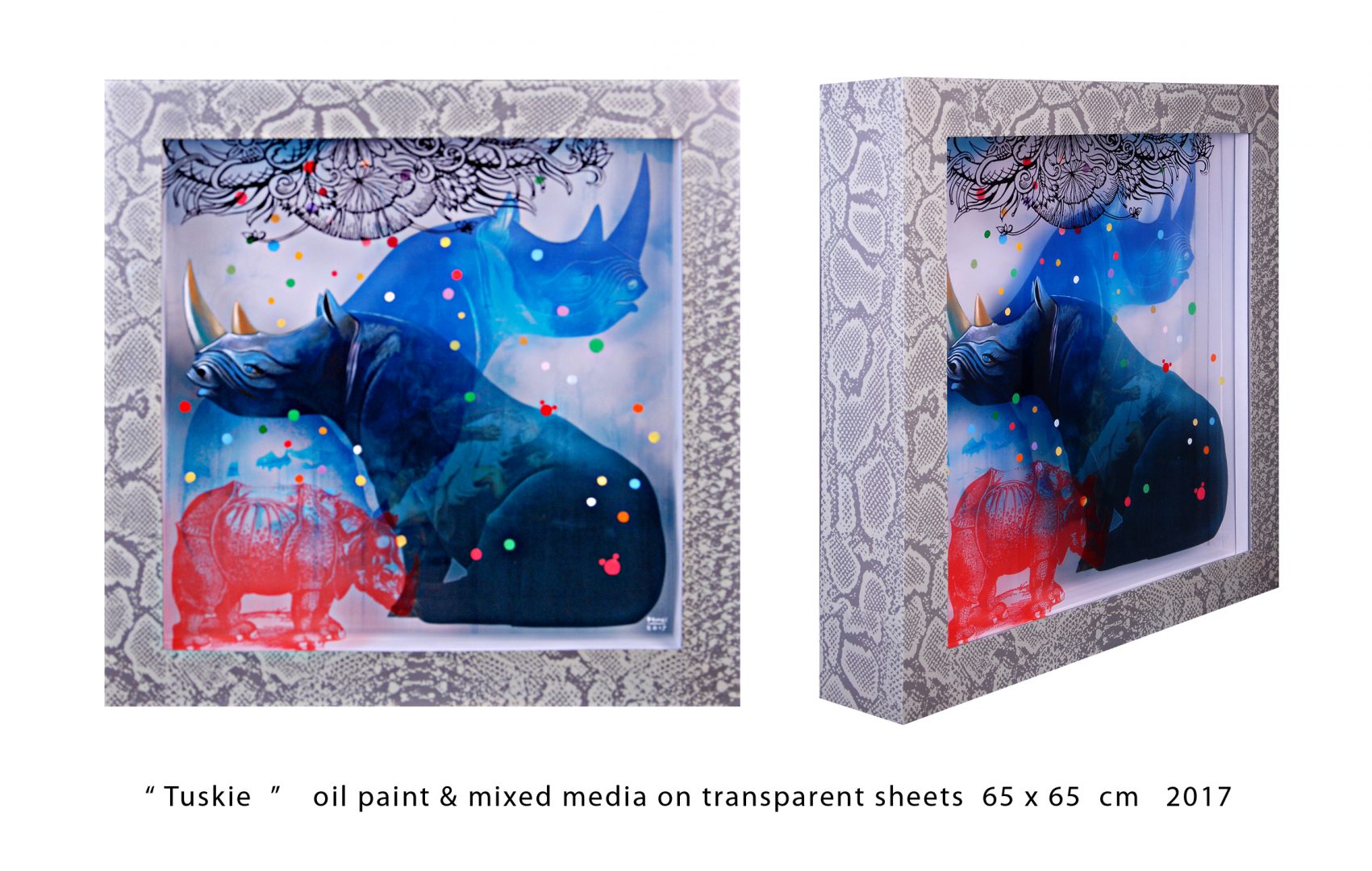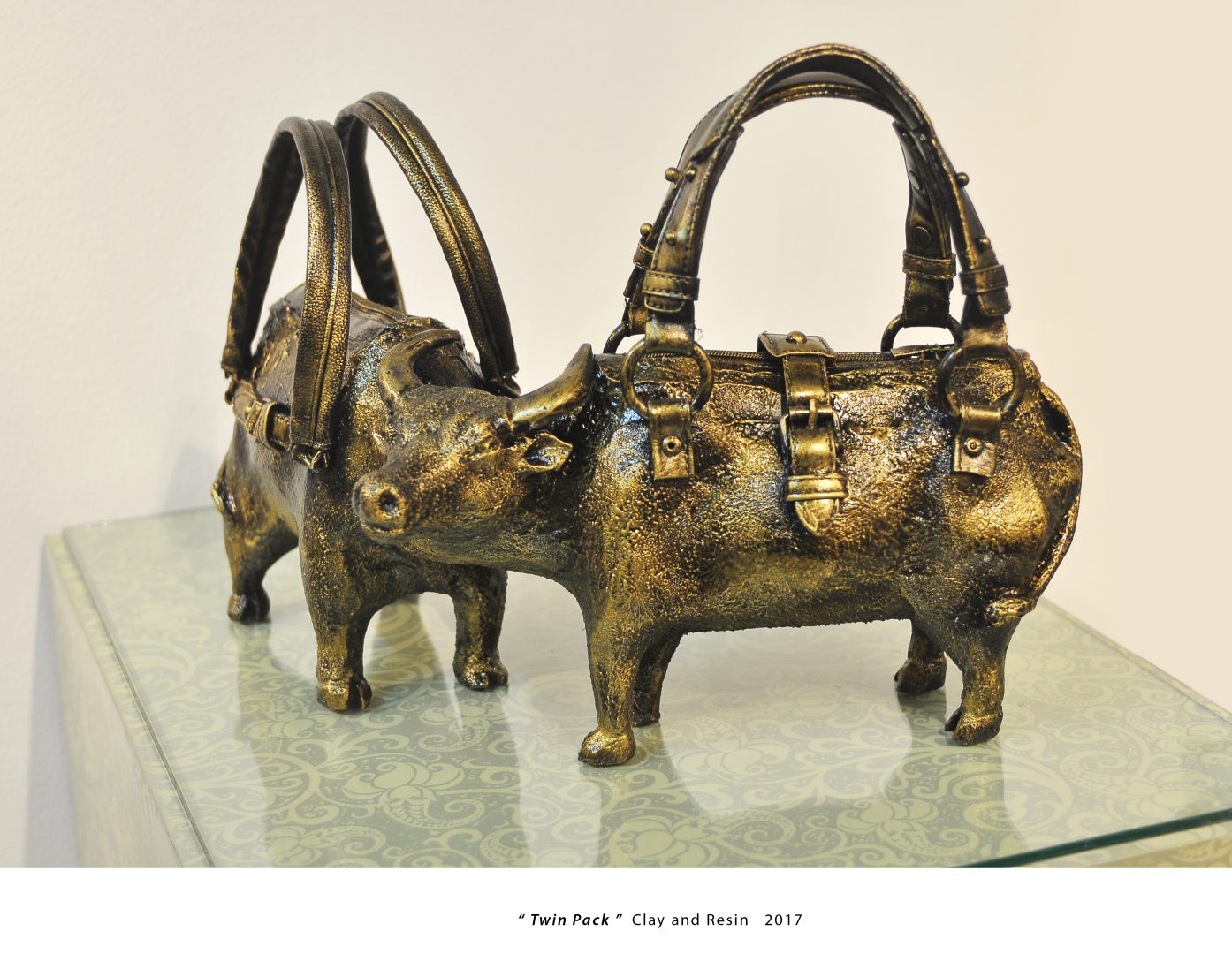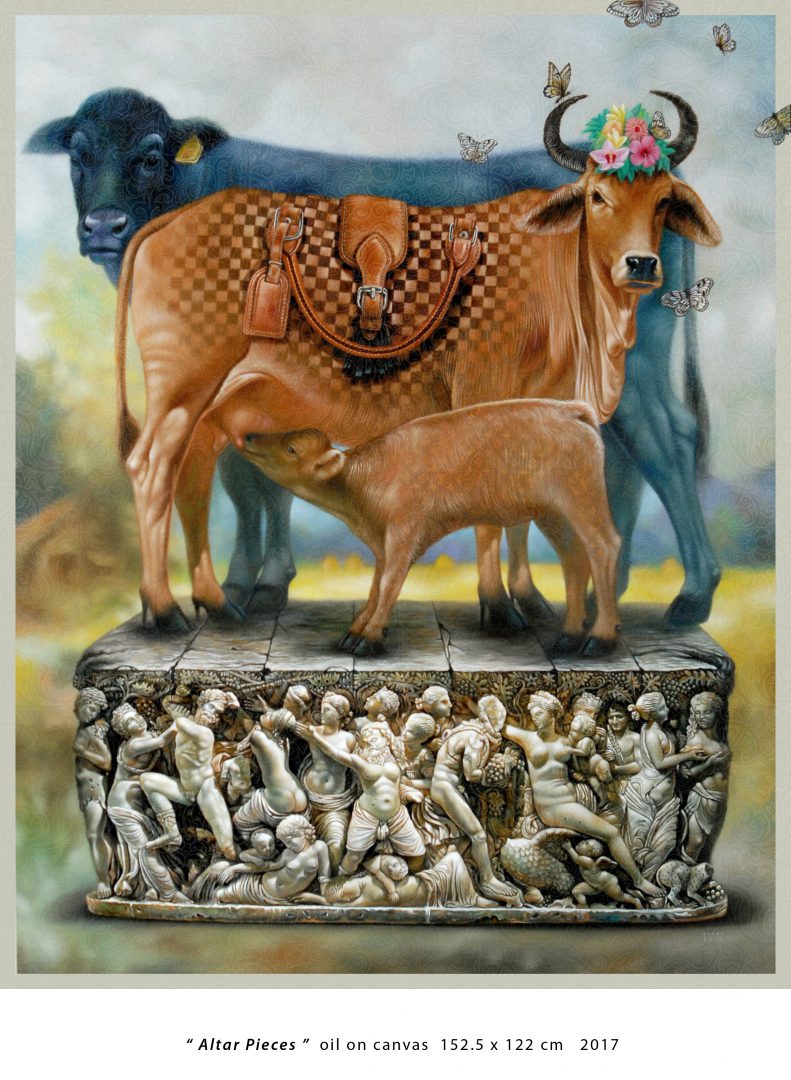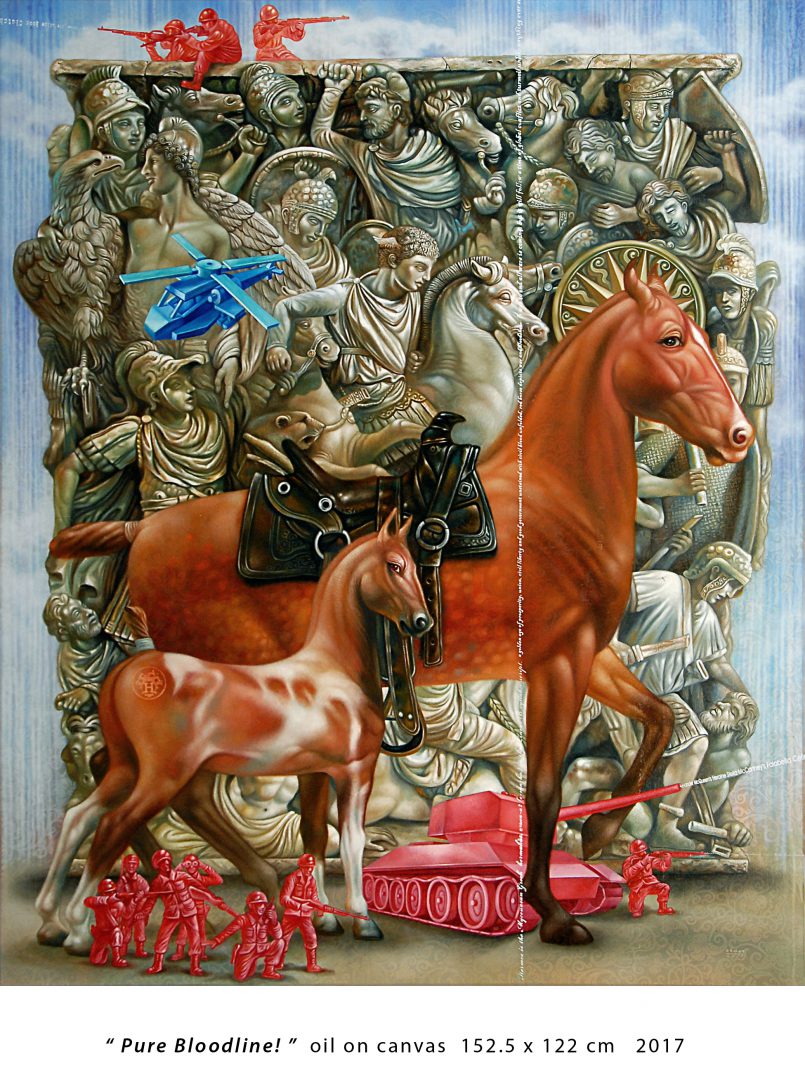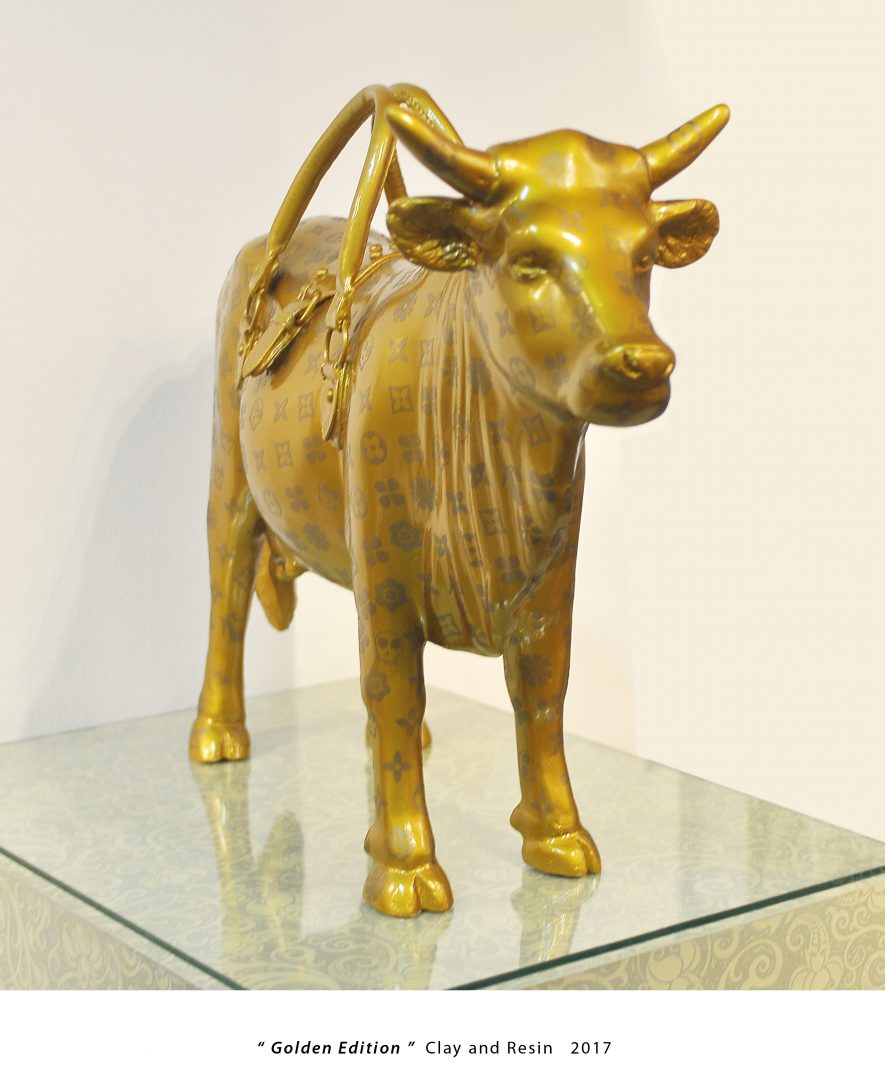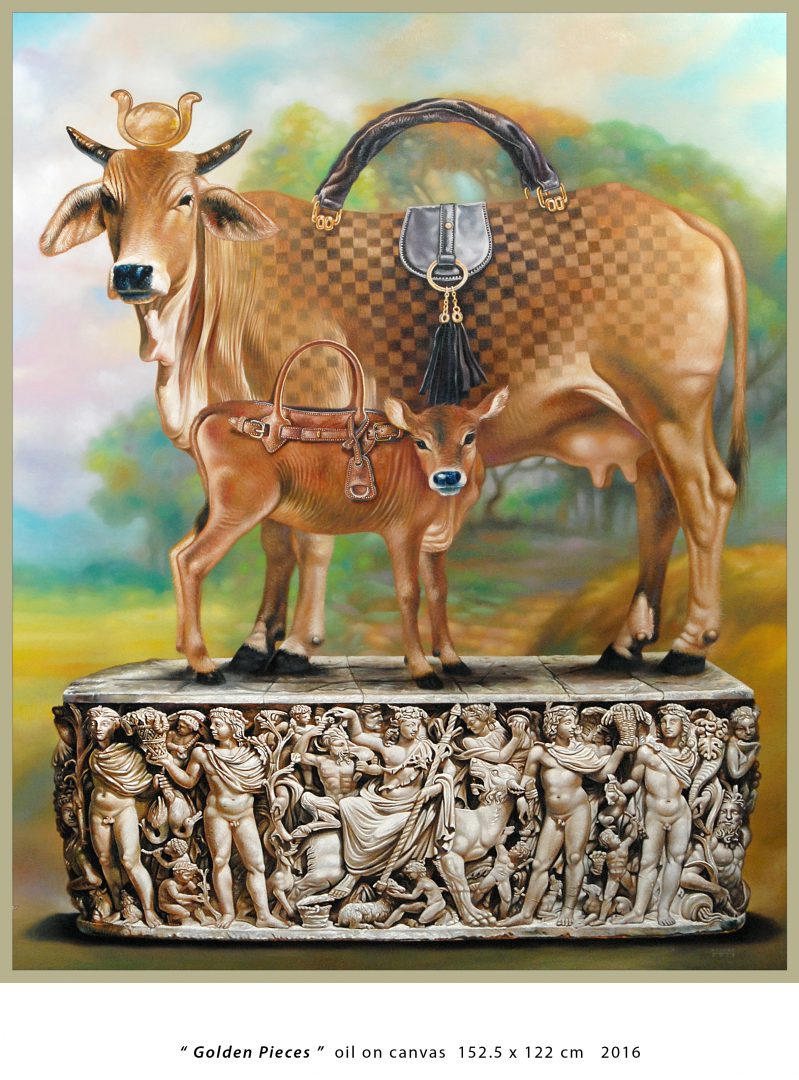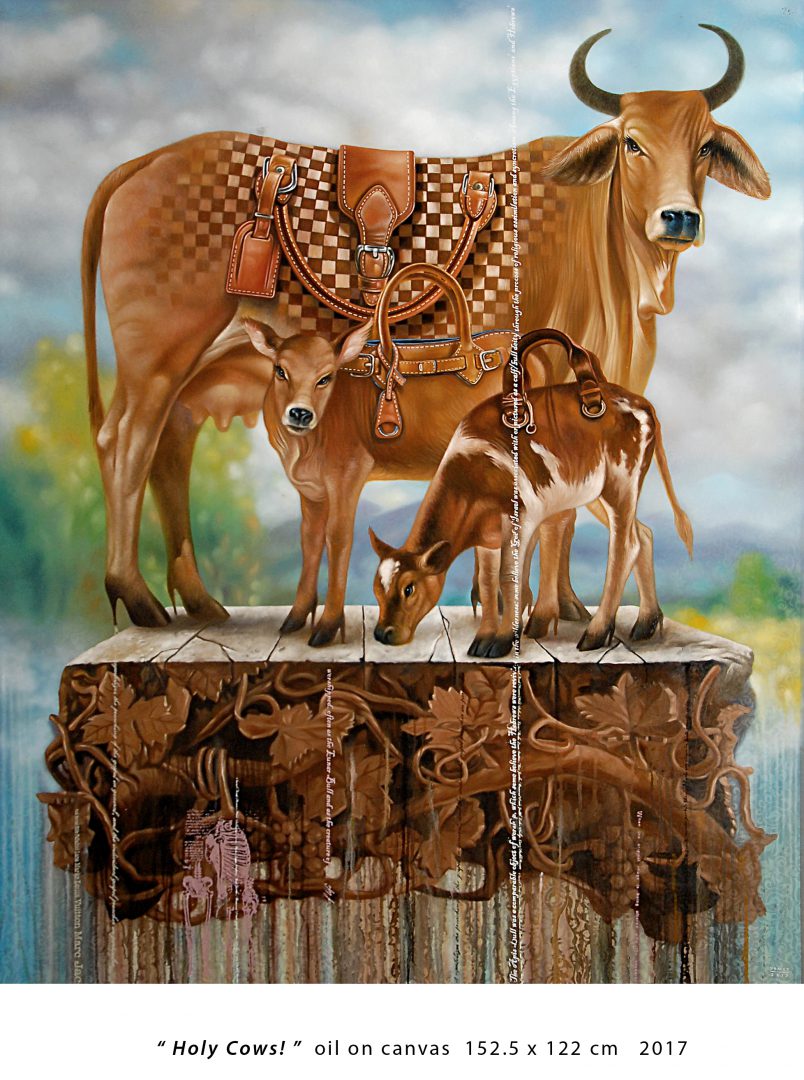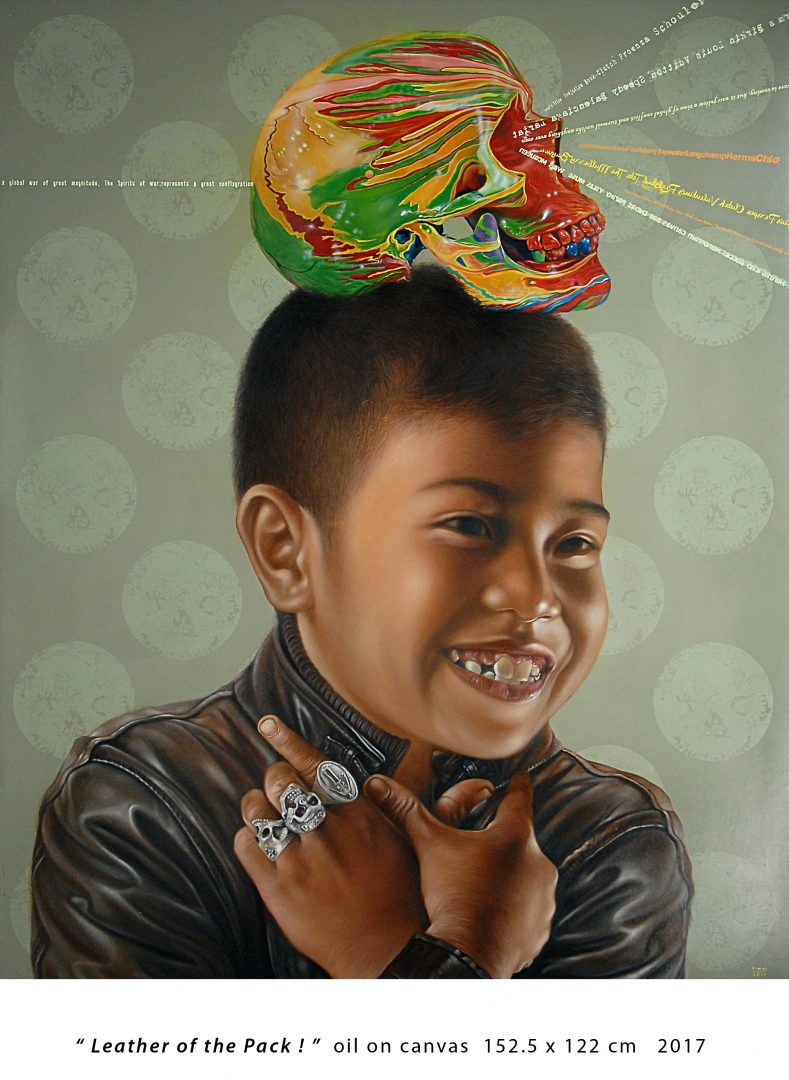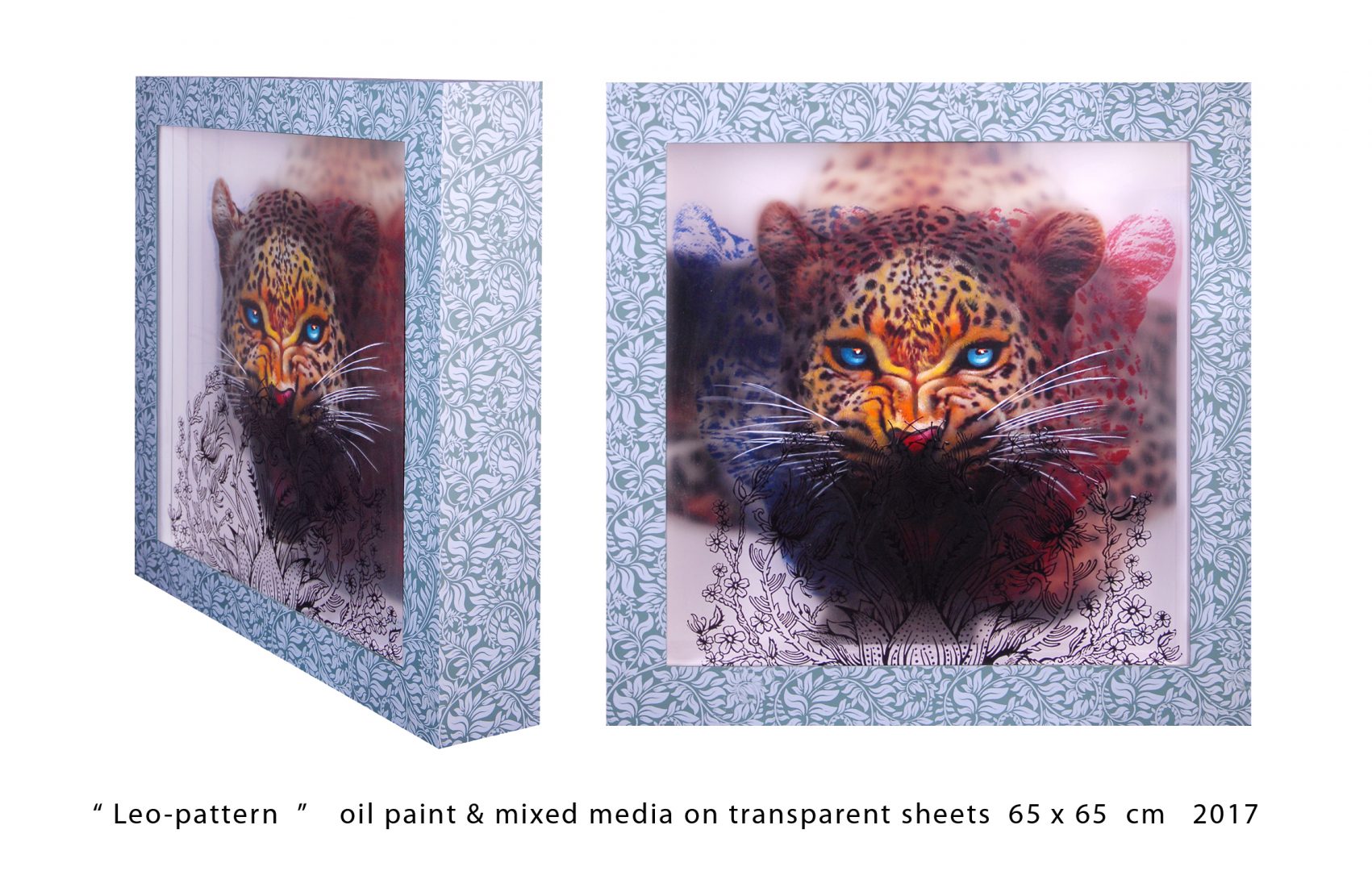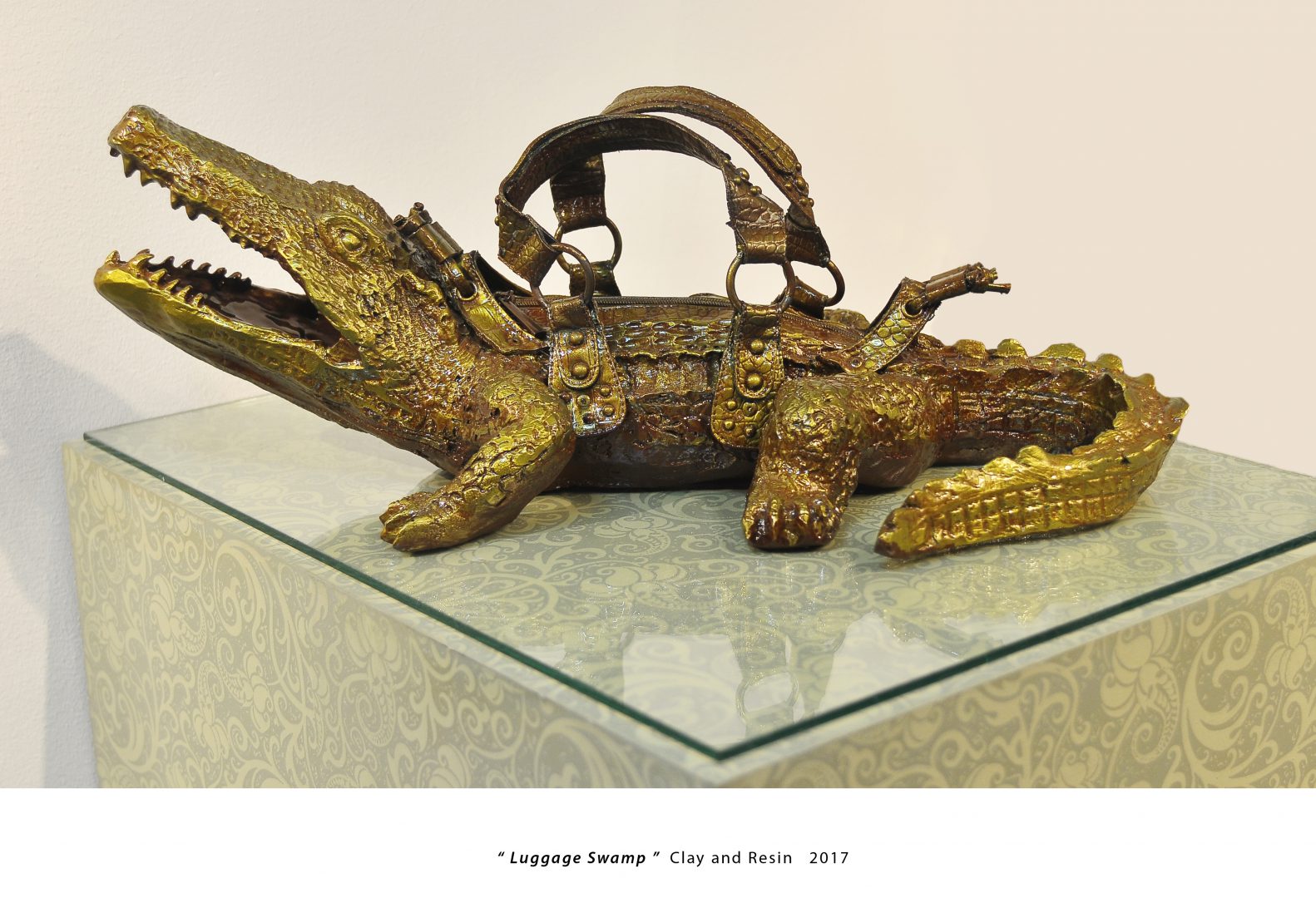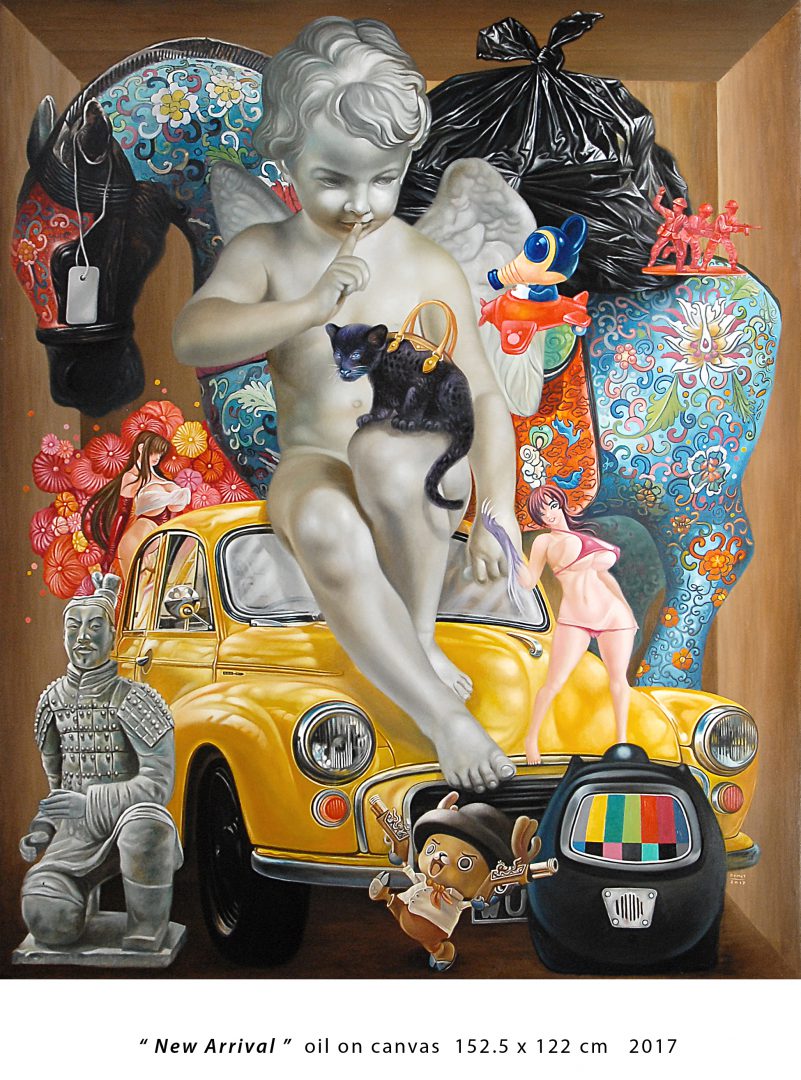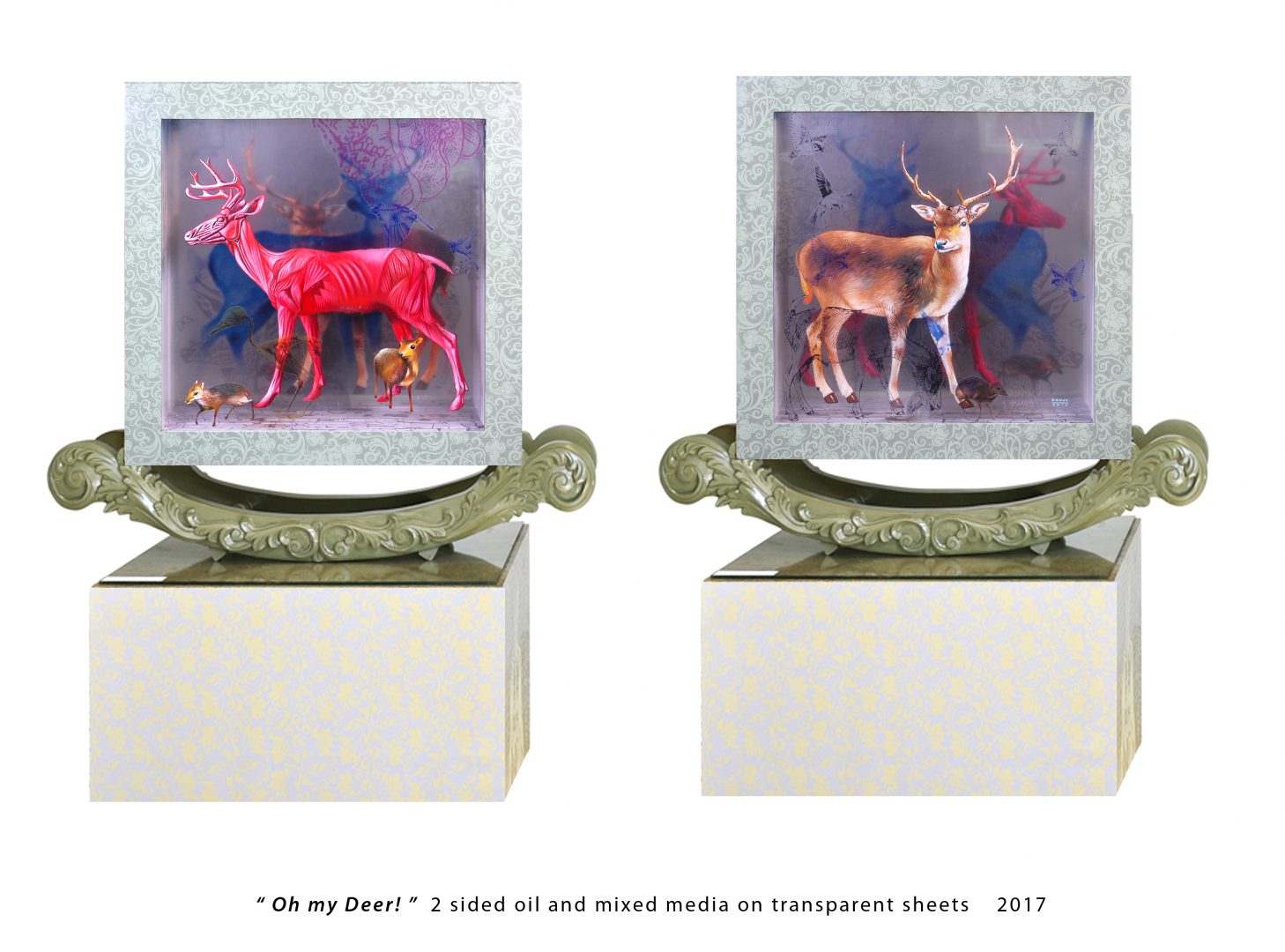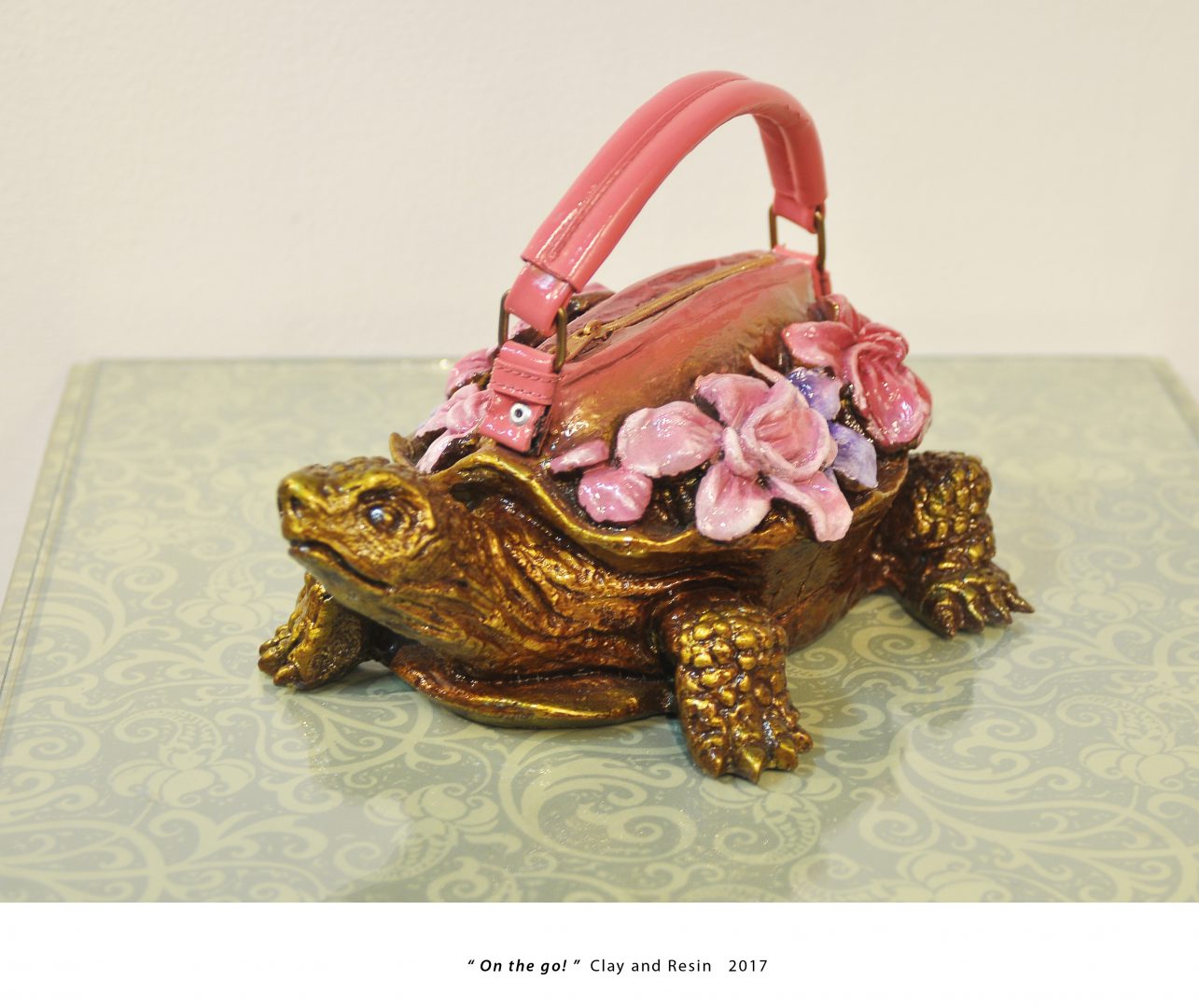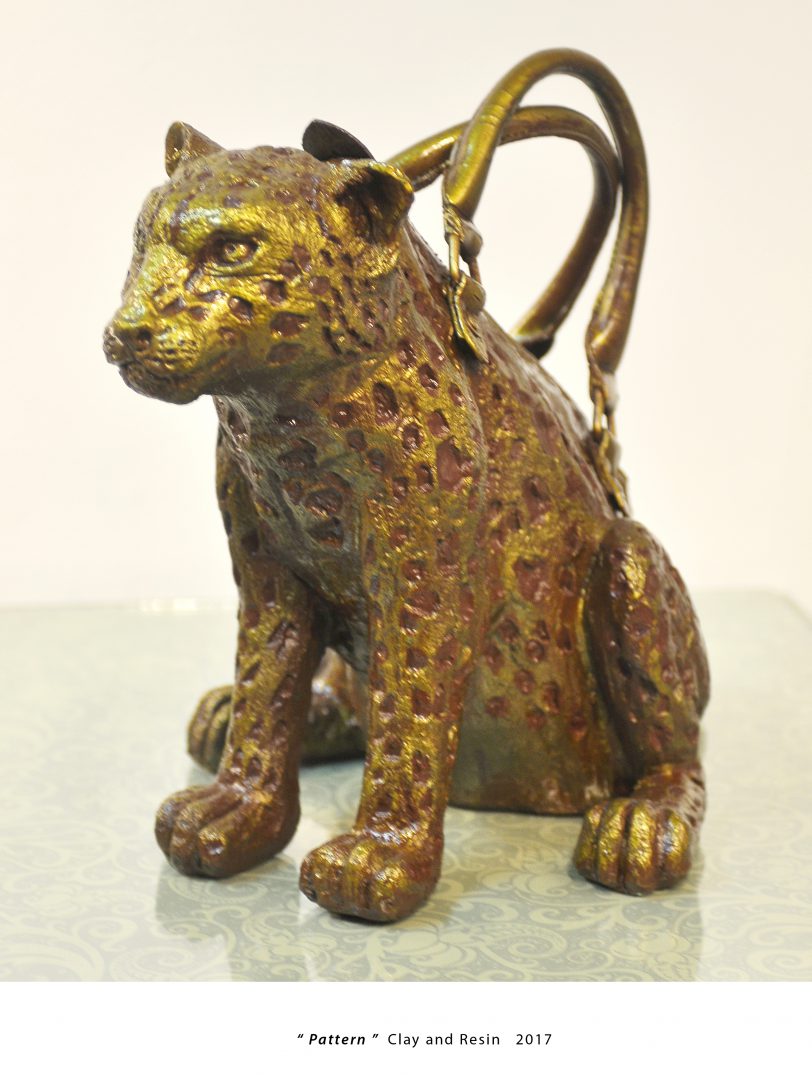The MATERIAL WORLD in the art of DEMETRIO dela CRUZ
By Cid Reyes
Remember the lyrics of the Madonna song, “Material Girl”? Let’s refresh the memory:
They can beg and they can plead
But they can’t see the light (that’s right!)
‘Cause the boy with the cold hard cash
Is always Mr Right.
‘Cause we are living in a material world
And I am a material girl!
And no greater evidence of our obsession with material goods is there than our unabashed idolatry of branded goods. You know them all, but we won’t name them here, ‘cause there’s no such thing as a free lunch or free advertising.
One Filipino artist, however, has held up a mirror which reflects the gross indecency of our insatiable appetite for worldly goods. His name is Demetrio De la Cruz, better known to the art scene as “Demet,” and it is through his art that he has pricked the conscience of us all. Coming to the notice of esteemed critic Alice Guillermo, she writes:
“The glittering display windows of mall shops and boutiques seem to cry out ‘We are on sale!’ to the passing shoppers. Within them are products of all kinds with a premium on branded imported goods that are flown to the country by rampant globalization. But the show windows that are the new subject of prizewinning artist Demetrio De la Cruz hide meanings behind them that are embedded in the contemporary social context and constitute a veiled critique of our society. Beyond the glitzy images, the artist craftily uses the display window to suggest a multitude of issues, from environmental damage to drug trafficking and the sale of women’s bodies.” Guillermo summed it up in a damning phrase: “The avidity for luxury goods.”
It may seem strange that such a subject should cross the mind of Demet. A full-blooded Ilocano, hailing from a region where the native folks are known for their thrift and industry, Demet, the eldest son, was raised, by his own admission, by poor parents who struggled to make ends. As a child, after school, he remembers helping his mother in the marketplace, hawking her bilaos of native dried fish.
A precocious child, his artistic talent early emerged in his juvenile years, able to realistically copy illustrations from American comic books of superheroes and sinister villains. His parents financially supported his art studies at the Far Eastern University, during which time he was also selling his paintings on the side. Aside from the sale of his paintings, After graduation, Demet also found employment in an art firm, designing labels for consumer products. The few years’ stint in graphic employment further honed his technical skills in draftsmanship, leading to his having a dexterous hand in an almost photographic rendition of reality and a mastery of the physiognomy of the human figure. Indeed, not only of the human anatomy but, intriguingly, of the complex interstices of the computer board circuit and the pinball machine. This interest let to his construction of artworks that are interactive, incorporating sight, sound and smell, emanating mysteriously from the work, catching the viewer with surprise and delight.
One particular work, which caught the attention of the jury of a national competition, was based on the concept of the “daing” – the native dried fish which her mother used to sell, twinned with the emotion of suffering, which in the vernacular, signifies a bitter lament and anguish induced by physical pain. As one digitally maneuvers the machine, it then emits the enveloping smell of “daing” - the staple viand of the poor.
From symbols of the poor, Demet was transfixed by the symbols of the affluent, the luxury goods in the shop windows of upscale malls. In so doing, the artist in effect reduces the viewer into a voyeur, salivating over the objects of desire, which are beyond the reach of us mortals, living on meager salaries, stipends, allowances and pensions. Demet has also created a now iconic image: a startling sight of a cow studded with the logos of a brand famous for its leather bags and shoes. Under the steady harsh beams of the shop window overhead lights, the cow is a veritable Golden Calf, worshipped by the Israelites, delivered from their Egyptian masters by Moses, but so soon turned into godless idolators. Demet’s coveted cow, raised on a pedestal, now sports a leather handle conveniently on its back, ready for anyone – like Madonna’s “boy with the cold hard cash” – to snap up in triumph.
Moreover, Demet conflates images from ancient Greece and Rome, such as the Three Graces, as well as of the Renaissance, with Michelangelo’s monumentally-sized marble statue of David. These are more than just paintings but multi-media and 3-D production, a lacerating accusation of a public so consumed by greed and covetousness, that we think nothing of the pillage and death of animals and the destruction of the environment. Even China has not been spared the artist’s astute, socially observant eye, alluding to its invasive depredation not only of our people through their “Made-in-China’ products flooding Divisioria, but also of our rightfully-owned islands.
A recent body of works were also exhibited at the recent Art Fair Phils., with the collective title “Luxzoorious.” This is a continuing indictment of man’s unconscionable destruction of the animal kingdom to serve his luxurious needs.
A happy family man, married to wife Marivic, Demet is doting father to four little darlings, who have playfully and gamely become Demet’s instant models and characters in his visual scenarios. No glittering enticements from the material world can lure Demetrio Dela Cruz away from the comfort and joy of his own family.
The Link
15 - 20 February 2017
Address:
Parkway Dr
Makati
Metro Manila
Philippines


